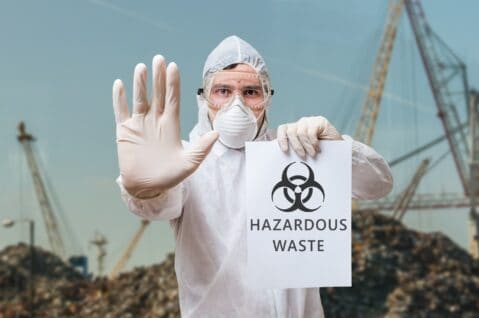How to Properly Use HazCom Labels

HazCom label errors are second on the list of OSHA’s most frequently cited standard violations. This can land companies with hefty fines, employee and client injuries, and lawsuits.
But what are HazCom labels? How can you avoid a citation? Read on to learn what these labels do and how you can create them appropriately.
What Are HazCom Labels?
Like Safety Data Sheets, Hazard Communication (HazCom) labels are required by OSHA. Unlike SDS sheets, HazCom labels are affixed to the outside of a container. They always are with the material and therefore no one needs to search for the contained information.
HazCom labels are much smaller than external SDSs. They only have 6 sections rather than the 16 that SDSs have. This means that they’re far more straightforward and only present the most critical information about a material.
HazCom labels are primarily used as shipping labels on hazardous chemicals. If you are moving materials from one location to another, the label ensures that the recipient- rather it’s an individual or a company- has all the necessary information for immediate handling.
What Is Included on a HazCom Label?
HazCom labels require six core sections.
The first is product identification. This lets people know the chemical name of the material as well as the CAS registry. No one will ever need to wonder what they’re working with, even when they first obtain the container.
Manufacturer identification is also necessary. You need to have a name, address, and phone number on the bottle when you manufacture and ship out the chemical.
Signal words are also important for those who receive chemicals. There are only two options here: ‘warning’ and ‘danger.’ ‘Warning’ signifies that there are nonlethal risks associated with the material while ‘danger’ is the more severe warning.
A hazard statement that describes the chemical’s specific hazards is a necessary addition to the signal word. ‘Danger’ is nonspecific, but ‘can cause prolonged liver damage when inhaled or absorbed through the skin’ tells the reader exactly what the risk is. This ensures that everyone is clear on what the hazards of using the chemical entail.
OSHA HazCom labeling also requires a pictogram to be placed alongside label text. For example, a fire pictogram indicates flammable materials while a skull and crossbones mean that it’s deadly. These symbols are international and transcend the language of the label.
Finally, there must be a precautionary statement that recommends potential risk reduction measures. This section may talk about how to store and transport the chemical. It also may discuss disposal measures and disaster recovery.
Promote Employee and Client Safety
While there are many ways that you can promote safety in workplaces with hazardous materials, HazCom labels are one of the most important. Along with safety data sheets, they’re critical to letting everyone know how to protect themselves.
We’re committed to ensuring that you meet OSHA requirements and keep those who work with chemicals safe. Schedule a demo of our services today to learn more about managed SDS and HazCom labeling!
